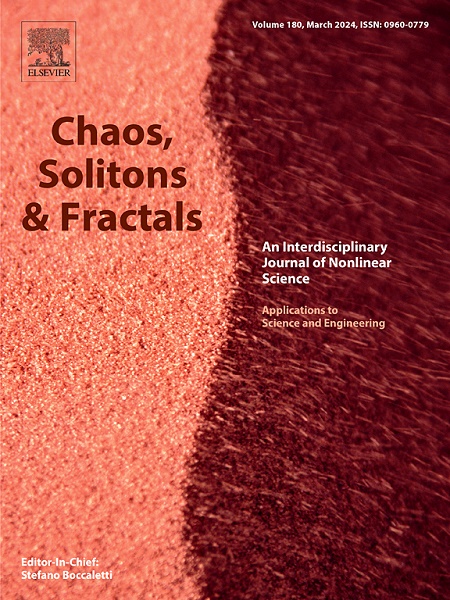Theoretical analysis and practical application of multi-patch infectious disease model
IF 5.3
1区 数学
Q1 MATHEMATICS, INTERDISCIPLINARY APPLICATIONS
引用次数: 0
Abstract
Human movement plays a key role in the spread of infectious diseases. However, in real life, mobility behavior often exhibits significant heterogeneity. Therefore, secondary contact is considered, which increases the probability that susceptible populations turn exposed. Based on these considerations, a multi-patch system that incorporates the above factors is proposed. First, the dynamics of this system are analyzed. The system’s well-posedness and the impact of the global basic reproduction number on disease transmission are then established. Additionally, the uniqueness and stability of the endemic equilibrium point is proved when the global basic reproduction number exceeds 1. The relationship between the patch-specific basic reproduction number and the global reproduction number is also established. Next, a local analysis examines the internal dynamics of each patch, and the bifurcation phenomena in the system are demonstrated. Finally, in the numerical simulation section, the impact of the basic reproduction number on disease transmission is analyzed through the control variable method and the partial rank correlation coefficient method. The model is fitted to actual Human Immunodeficiency Virus data from Africa, with five countries selected as examples based on the clustering principle. The global basic reproduction number is calculated, and the results indicate that the disease does not outbreak when the global basic reproduction number falls below 1. Furthermore, the seasonal autoregressive integrated moving average method is used for prediction to verify our hypothesis, which provides practical significance to the model.
多斑块传染病模型的理论分析与实际应用
人类的运动在传染病的传播中起着关键作用。然而,在现实生活中,流动性行为往往表现出显著的异质性。因此,考虑到二次接触,这增加了易感人群暴露的可能性。在此基础上,提出了一种综合上述因素的多贴片系统。首先,分析了该系统的动力学特性。然后建立了系统的适定性和全球基本繁殖数对疾病传播的影响。此外,还证明了当全局基本繁殖数超过1时,地方性平衡点的唯一性和稳定性。建立了斑块特异性基本复制数与全局复制数之间的关系。接下来,局部分析检查了每个补丁的内部动力学,并演示了系统中的分岔现象。最后,在数值模拟部分,通过控制变量法和偏秩相关系数(PRCC)法分析了基本繁殖数对疾病传播的影响。该模型拟合了来自非洲的实际人类免疫缺陷病毒(HIV)数据,并根据聚类原则选择了五个国家作为示例。计算全局基本繁殖数,结果表明,当全局基本繁殖数小于1时,疾病不爆发。此外,利用季节自回归积分移动平均(SARIMA)方法进行预测,验证了我们的假设,对模型具有实际意义。
本文章由计算机程序翻译,如有差异,请以英文原文为准。
求助全文
约1分钟内获得全文
求助全文
来源期刊

Chaos Solitons & Fractals
物理-数学跨学科应用
CiteScore
13.20
自引率
10.30%
发文量
1087
审稿时长
9 months
期刊介绍:
Chaos, Solitons & Fractals strives to establish itself as a premier journal in the interdisciplinary realm of Nonlinear Science, Non-equilibrium, and Complex Phenomena. It welcomes submissions covering a broad spectrum of topics within this field, including dynamics, non-equilibrium processes in physics, chemistry, and geophysics, complex matter and networks, mathematical models, computational biology, applications to quantum and mesoscopic phenomena, fluctuations and random processes, self-organization, and social phenomena.
 求助内容:
求助内容: 应助结果提醒方式:
应助结果提醒方式:


